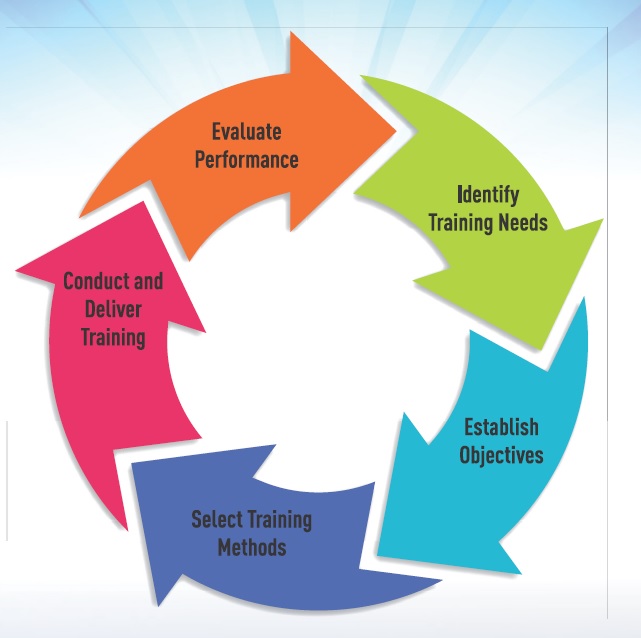Trainings & Capacity Building
We provide best trainings
Trainings & Capacity Building
Most employees have some weaknesses in their workplace skills. A training
program allows you to strengthen those skills that each employee needs to improve. A development
program brings all employees to a higher level so they all have similar skills and knowledge.
This helps reduce any weak links within the company who rely heavily on others to complete basic
work tasks. Providing the necessary training creates an overall knowledgeable staff with
employees who can take over for one another as needed, work on teams or work independently
without constant help and supervision from others
We (ETS) provide following services to individuals, small businesses and at corporate level to enhance the skills at all levels:

We (ETS) provide following services to individuals, small businesses and at corporate level to enhance the skills at all levels:

We (ETS) provide trainings on following topics:
- Development of Organizational Structure.
- Budgeting.
- Management.
- Fund Raising.
- Project Management.
- Monitoring and Evaluation.
- Strategic Management.
- Self-Finance Projects.
- Building Human Resource Policies.
- Effective Business Communication skills.
- Leadership.
- Team Building.
- Conflict Resolution.
- Teachers Training.
- Employee Engagement.
- Critical Thinking.
- Corporate Communication.
- Stress Management.
- Career Consoling workshops.
- Managing Diversity in the work place.
While building any training program, we (ETS) need to
consider so many things to make sure that training provided at any
level is good enough to enhance the skills of the workers/employees.
So, we take a deep look into the following things to make the
training programs even more effective:
Under this process we (ETS) work on following 4 basic things:
So what are these principles? Adult learners:
so that they can work it into their schedules and complete any necessary pre-training preparation. We also use Learning Management System (LMS). An LMS is a software application used assign, deliver, track, and report on training. It helps the employees to track their training material, assignments etc. LMS is also used to send notifications to the employees for new assignments, deadlines for submission, next training sessions etc. LMS keeps them updated all the time.
We (ETS) know that giving training and appreciating yourself is easy thing to do but we do have proper process of evaluating the training program executed. For that we use following 4 steps to check the effectiveness of the training program:
- Performing Training Needs Assessment
Under this process we (ETS) work on following 4 basic things:
- Identify Business’s Primary Goal.
- Determine the tasks/job employees need to perform.
- Determine the training activities that will help the employees to perform.
- Determine the characteristics of the employees that will make the training more effective.
- Keeping Adult Learning Principles In Mind
So what are these principles? Adult learners:
- Are self-directed
- Come to training with a lifetime of existing knowledge, experience, and opinions
- Are goal-oriented
- Want training that is relevant
- Want training that is task-oriented
- Learn when they see “what’s in it for them”
- Want to be and feel respected
- Develop Learning Objectives
- We (ETS) analyze and build a checklist of things the workers must be able to do after the training is completed. They are the “North Star” that all aspects of your training should be pointed at. Once we’ve created the learning objectives, we create content that covers the objectives—and nothing but. In addition, any quizzes, tests, case studies, or hands-on exercises performed during training to evaluate the worker’s comprehension of the training should assess only the workers’ understanding of the objectives. And finally, any observation of workers when they’re back on the job to evaluate the effectiveness of the training should also focus on the performance of these objectives.
- Design Training Material
- Remember that it’s important to design before you rush into the next step (development)
- Always focus primarily on the learning needs of the employees, and not on what’s easy for our trainers.
- Only create training content and assessments that relate directly to the learning objectives.
- Remember the adult learning principles.
- Include as much hands-on practice or simulation as possible: people learn by doing.
- Whenever possible, put the employees in control of the learning process (instead of the trainer).
- Do everything possible to let the employees talk and interact with the trainer and with each other during the training.
- Make sure there’s plenty of opportunity for feedback during training.
- Break the training materials up into small “chunks” that are easier to take in and understand.
- Order your “chunked” training materials in a logical manner—one step that builds on top of another, or chronologically, etc.
- We (ETS) use a “blended learning” approach that includes training in several different formats (computer-based, instructor-led, etc.).
- We (ETS) try to appeal to a variety of workers’ senses during training—sight, hearing, touch, smell, and taste (when appropriate and not dangerous). Sight is by far the most important sense for learning, but adding the others when possible does help.
- Implement The Training
so that they can work it into their schedules and complete any necessary pre-training preparation. We also use Learning Management System (LMS). An LMS is a software application used assign, deliver, track, and report on training. It helps the employees to track their training material, assignments etc. LMS is also used to send notifications to the employees for new assignments, deadlines for submission, next training sessions etc. LMS keeps them updated all the time.
- Evaluate The Training
We (ETS) know that giving training and appreciating yourself is easy thing to do but we do have proper process of evaluating the training program executed. For that we use following 4 steps to check the effectiveness of the training program:
- Employees Reaction To Training
- Employee’s Actual Learning
- Employee’s Post Training Job Behavior
- Quantifiable Business Results

